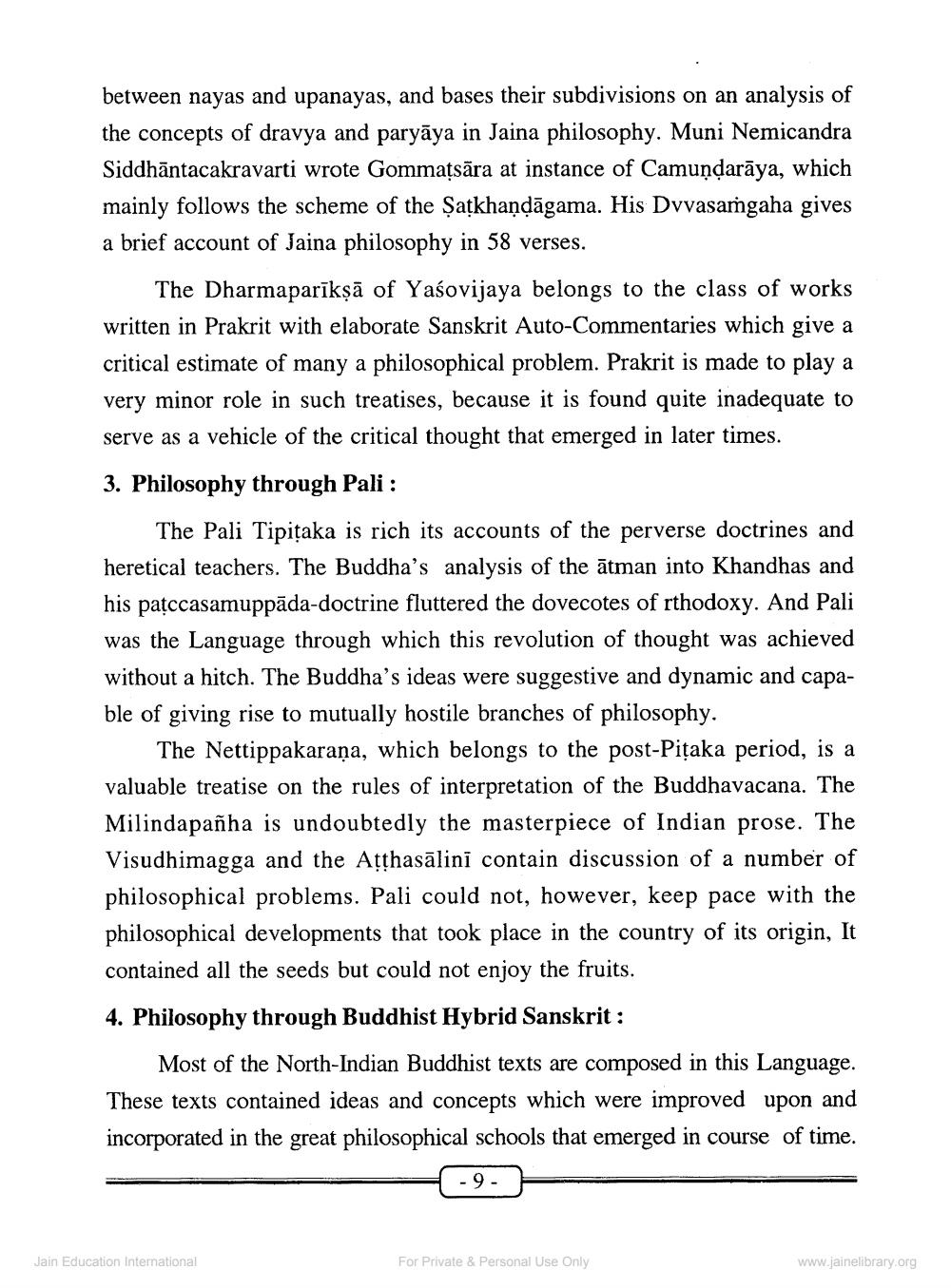________________
between nayas and upanayas, and bases their subdivisions on an analysis of the concepts of dravya and paryāya in Jaina philosophy. Muni Nemicandra Siddhāntacakravarti wrote Gommațsāra at instance of Camundarāya, which mainly follows the scheme of the Șatkhaņdāgama. His Duvasamgaha gives a brief account of Jaina philosophy in 58 verses.
The Dharmaparīkņā of Yaśovijaya belongs to the class of works written in Prakrit with elaborate Sanskrit Auto-Commentaries which give a critical estimate of many a philosophical problem. Prakrit is made to play a very minor role in such treatises, because it is found quite inadequate to serve as a vehicle of the critical thought that emerged in later times. 3. Philosophy through Pali :
The Pali Tipitaka is rich its accounts of the perverse doctrines and heretical teachers. The Buddha's analysis of the ātman into Khandhas and his pațccasamuppāda-doctrine fluttered the dovecotes of rthodoxy. And Pali was the Language through which this revolution of thought was achieved without a hitch. The Buddha's ideas were suggestive and dynamic and capable of giving rise to mutually hostile branches of philosophy.
The Nettippakaraṇa, which belongs to the post-Pițaka period, is a valuable treatise on the rules of interpretation of the Buddhavacana. The Milindapañha is undoubtedly the masterpiece of Indian prose. The Visudhimagga and the Atthasālini contain discussion of a number of philosophical problems. Pali could not, however, keep pace with the philosophical developments that took place in the country of its origin, It contained all the seeds but could not enjoy the fruits. 4. Philosophy through Buddhist Hybrid Sanskrit:
Most of the North-Indian Buddhist texts are composed in this Language. These texts contained ideas and concepts which were improved upon and incorporated in the great philosophical schools that emerged in course of time.
-9.
Jain Education International
For Private & Personal Use Only
www.jainelibrary.org




